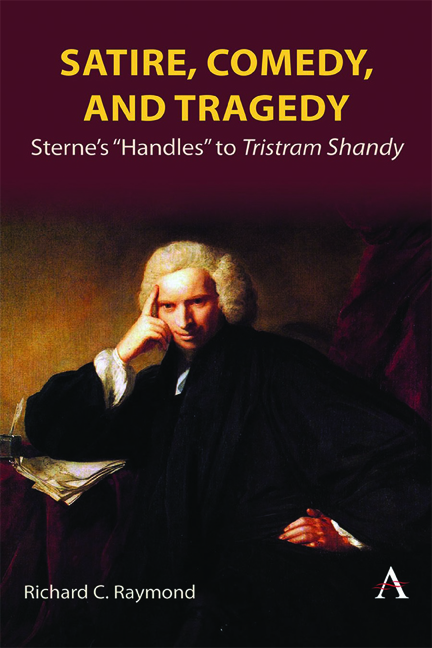Book contents
- Frontmatter
- Contents
- Preface
- 1 Walter, Toby, Tristram, and the Reader: Sterne’s Revision of “Dullness”
- 2 The Yorick Standard, Walter’s Benevolent Dullness, and Tristram’s Friends: The Plot of Satire in Tristram Shandy
- 3 “True Shandeism”: The Unhappy Comic Action in Tristram Shandy
- 4 Isolation and Death: The Tragic Undertones of Shandean Benevolent Dullness
- 5 Benevolent Dullness, Ambiguity, and the Reader: Modal Complexity and the Plots of Tristram Shandy
- 6 Laurence Sterne’s Letters
- 7 The Shandean Sermons of Parson Sterne
- 8 Parson Yorick in A Sentimental Journey and in A Continuation of Bramine’s Journal
- 9 The International Perspective on Tristram Shandy and the Argument
- References
- Index
Preface
Published online by Cambridge University Press: 01 March 2024
- Frontmatter
- Contents
- Preface
- 1 Walter, Toby, Tristram, and the Reader: Sterne’s Revision of “Dullness”
- 2 The Yorick Standard, Walter’s Benevolent Dullness, and Tristram’s Friends: The Plot of Satire in Tristram Shandy
- 3 “True Shandeism”: The Unhappy Comic Action in Tristram Shandy
- 4 Isolation and Death: The Tragic Undertones of Shandean Benevolent Dullness
- 5 Benevolent Dullness, Ambiguity, and the Reader: Modal Complexity and the Plots of Tristram Shandy
- 6 Laurence Sterne’s Letters
- 7 The Shandean Sermons of Parson Sterne
- 8 Parson Yorick in A Sentimental Journey and in A Continuation of Bramine’s Journal
- 9 The International Perspective on Tristram Shandy and the Argument
- References
- Index
Summary
Reflecting the turn toward cultural studies, the rich site for exploring issues of race, gender, and social injustices, the twenty-first century has seen many university presses publishing books focusing on multiple works and disparate authors. Most scholars have celebrated the value and timeliness of such publications, but I would argue that the time has come for a fresh reading of Sterne's greatest novel. In perusing the criticism on Sterne's work, we find Tristram Shandy frequently cited as a “novel on novel-writing,” a novel well “grounded” in “eighteenth-century fiction” yet a precursor to Joycean streamof- consciousness narration and to “postmodern” thought (Keymer 20, 27); we also find descriptions of Sterne's novel as equally grounded in satire on “Enlightenment system-building,” satire reminiscent of Burton's reflections on the sources of melancholy, Swift's allegories on madness, Cervantes’ anti-romances, and the “learned wit” of Rabelais and Monteyne (Keymer 20, 21, 24). Reflecting these diverse descriptions of Sterne's most famous novel, book-length studies of Sterne's Tristram Shandy appeared frequently in the 1950s, 1960s, and 1970s; since then, Sterne studies have multiplied and prospered, primarily in academic journals, but also in specialized books.
I offer this book, then, to demonstrate that, beyond the traditional objects of satire found in Sterne's Tristram Shandy, Sterne has revised the satiric plot in developing what I call the “benevolent dullness” of Walter, Toby, and Tristram; I borrow this term “dullness,” of course, from Alexander Pope's great satire “The Dunciad,” published in 1743, two decades before Sterne began publishing the first volumes of his novel.
The Shandys’ self-defeats derive, as this book will show, from generous instincts and from deliberate “moral characters” as well as from arrogant selfdeceptions that typify traditional objects of satire, such as leaders in government, the military, the sciences, the arts, and literature—the intelligent but sinisterly self-absorbed dunces that populate Pope's nightmarish poem and threaten collectively to “bury all” in a culture of “darkness.”
Additionally, the book will show that this paradoxical blend of dullness and benevolence in Sterne's characters generates an ambiguous moral condition that evokes both praise and blame in Sterne's readers.
- Type
- Chapter
- Information
- Satire, Comedy and TragedySterne's 'Handles' to <i>Tristram Shandy</i>, pp. vii - xiiPublisher: Anthem PressPrint publication year: 2023

